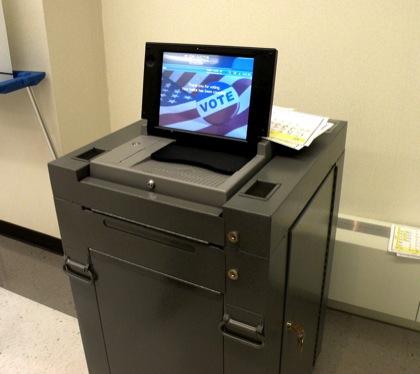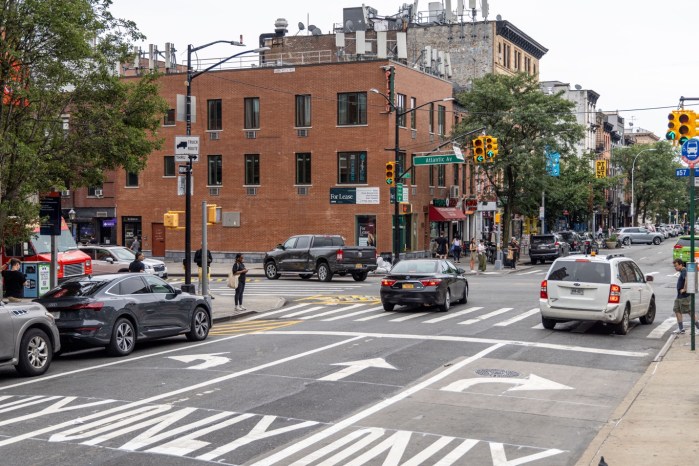Very soon, a rite of passage for many Brooklynites will be only a memory, as New York finally retires its venerable lever voting machines.
Earlier this month, just days before a state-imposed deadline, the New York City Board of Elections (BOE) selected a new electronic system to replace the old lever machines, voting for an optical scan system developed by Omaha-based Election Systems and Software (ES&S), over a similar system manufactured by Toronto-based Dominion Voting.
Had the city not selected a system by January 14th, the state could have stepped in to make the selection.
The new machines %u2013ES&S’s DS200(1) optical digital scanning devices — are supposed to get their first use during the September, 2010, primary. Between 5,000 and 7,000 will be provided to the city, and Aldo Tesi, president and CEO of ES&S said, “We’ve worked for eight years to understand the needs and technical requirements of New York voters, and have tailored our voting system to meet them.”
The change has been a long time in coming. New York is the last state in the country to come into compliance with the Help America Vote Act (HAVA), passed in 2002 after the troubled presidential election of 2000, which requires that voting machines be handicapped-accessible and recountable, and provide a second chance to vote, in case of error.
While verified voting advocates contend that the state has appropriately taken time to try to make the best selection, the federal Department of Justice (DOJ) didn’t see it that way, actually instituting a lawsuit to prod New York into moving forward. Hanging over the state has been the threatened loss of $190 million that the federal government would provide to help defray the costs of the transition to the new equipment.
The selection of the ES&S system is both a win and a loss for verified voting advocates. While, said Teresa Hommel, the chairperson of the Task Force on Election Integrity of the Community Church of New York, there is general satisfaction with the fact that New York opted for an optical scanning system over touch screen technology that had no actual paper trail, there are concerns that ES&S’s technology is flawed, with the fear that the integrity of elections could be compromised as a result.
As recently as the November 3, 2009 election, Hommel said, there was a problem with an ES&S system being piloted in New York’s Erie County, with a what she described as “vote switching.”
While, Hommel noted, the powers-that-be had been unwilling to define precisely what the problem was in that instance, it is known that, despite the fact that pre-tests of the system were supposed to be examined for irregularities, that did not happen, and the pre-tests %u2013 consulted after the fact — revealed the same problem that occurred during the real election.
“ES&S has a documented history, going back at least to 2002, of many vote switching situations, where jurisdictions have had to recount or reprocess votes if they are on paper, though they have had no way of dealing with this stuff if the voting took place on DREs (touch screen voting systems),” Hommel said.
“What we learned from it (the problem in Erie County) is that they haven’t fixed it yet, that there still are problems,” she went on.
In general, the accuracy of electronic voting, Hommel stressed, is subject to errors that can affect an election’s outcome. It is also simple to jigger deliberately with machines to change results, she said.
“It’s easy to make a mistake, so candidates are going to have to do more work to make sure the computers are set up right and to make sure the votes are counted accurately,” Hommel stressed.
The transition represents a sea change for New York, she said. “Lever machines are almost always set up right,” Hommel explained. “You can’t do vote switching without having it be really obvious because you would have a bar going from one lever to another.”
With electronic voting, however, mistakes can be difficult to detect, and vote switching can be done almost imperceptibly, Hommel said, because the necessary information for thousands of votes is contained on a single memory stick that could be tampered with prior to the election to record votes in a certain way, or switched after an election if extra care isn’t taken.
“What New York is not prepared for,” Hommel contended, “is the greater number of people who will be needed to make sure the process is overseen. The candidates are going to have to get their people there as observers, to make sure it’s done right and inspect the seals (on the memory sticks). They are going to have to check the set-up at the polls, to make sure the seals are secure and to make sure the memory sticks haven’t been changed, and they are going to have to close the polls, get a printout (of votes cast), and know that the law allows them to request an original copy of the printout from the scanner.”
Because each printout could be six feet long, and several candidates could request each, it’s also incumbent upon poll watchers to make sure that each scanner is equipped with a fresh paper roll, so the paper doesn’t run out, Hommel added.
Even though it is difficult to tamper with lever machines, with the old system, she added, there was always the possibility of “local cheating.”
But, she went on, “ES&S controls over 70 percent of the American vote counting process. Most of the machines have wireless or other types of communication capabilities. That means we have the infrastructure for national cheating, with one entity controlling most of the vote.”
Even before BOE approved the ES&S system, Public Advocate Bill de Blasio had released his Voter Information Plan whose goal is to ensure that city residents know how to use the new voting systems.
Among other things, de Blasio’s plan recommends outreach to various communities, including the disabled, the elderly and immigrants; upgrading educational materials (including a demonstration on BOE’s s website); a broad multilingual advertising campaign; and translations of informational materials into Chinese, Korean, Russian and Spanish, and possibly other languages, as well.
“In order to ensure that New Yorkers vote, we need to make sure that all New Yorkers know how to vote,” de Blasio stressed.























